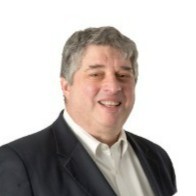Physics To Genetics: New Treatments For Hereditary Heart Disease

By Matthew Pillar, Editor, Bioprocess Online

Marc Semigran, M.D. felt a bit of nostalgia creep in as he watched the recent space flights taken by billionaire civilians Sir Richard Branson and Jeff Bezos. He’s a child of the ‘60s, an era remembered by many for its political tumult, but one Dr. Semigran fondly recalls for inspiring his scientific curiosity. Fifty-two years prior to the day of Bezos’ launch aboard Blue Origin, Dr. Semigran was a young, awestruck boy at summer camp watching Neil Armstrong leave man’s first boot track in the dust of the moon. “Like many people of my generation, I was amazed to see the technology, the engineering, the mathematics, and the bravery it took to put man on the moon. That moment inspired my interest in science and physics,” he says.
There was no question Dr. Semigran had the mental makings required of a rocket scientist, but two fundamental obstacles stood in the way of his astronomical pursuits. First, he points out that he was a bit on the clumsy side. “I don’t know that I could quite qualify as captain of a spaceship,” he jokes. More formative in his decision to pursue medicine was an inherent desire to apply science to create a positive impact on human health. “While majoring in chemistry at Harvard, I realized that I wanted to do something a bit more people-oriented.”
That decision ultimately resulted in a Harvard Medical School M.D. via the Harvard-MIT Health Sciences and Technology Program, followed by Medical Directorship of the Heart Failure and Cardiac Transplantation department at Massachusetts General Hospital and nine years of Harvard Medical School associate professorship.
The Marriage Of Mechanics And Medicine

That collaborative experience opened up an opportunity to apply his clinical learnings in an arena with resources far greater than that which is limited by government funding: the biopharma industry. In 2016, Dr. Semigran joined the clinical-stage biopharmaceutical company MyoKardia, which was focused on the treatment of heritable cardiomyopathies, as Chief Medical Officer. “The MyoKardia opportunity gave me a chance to study and expand on our knowledge of the genetics of cardiovascular disease, and to apply my skillset as a clinical investigator to explore the development of therapies that could leverage our knowledge of an individual patient’s disease and marry that to the specific mechanism of action of our drugs,” he says. It was precision medicine in practice, a chance to leverage the power of industry to impact thousands of patients’ lives, as opposed to the one-by-one approach of clinical academia. At MyoKardia, Dr. Semigran helped develop the small molecule myosin inhibitor mavacamten, which served to correct the mechanism by which a variety of genetic mutations lead to hypertrophic cardiomyopathy. His leadership of that program through Phase 2 and 3 pivotal trials contributed to the $13.1 billion cash acquisition of MyoKardia by Bristol Myers Squibb in October 2020.
Exploring Gene Therapies For Heart Disease
The looming success of mavacamten—the FDA set a January 28, 2022 Prescription Drug User Fee Act goal date for a decision on the drug—whet Dr. Semigran’s appetite for further exploration of gene therapies for heart disease. On the heels of BMS’ acquisition of MyoKardia, Dr. Semigran made the move to Renovacor, a pre-clinical company developing a pipeline proprietary AAV-based gene therapies targeting BAG3-associated cardiovascular and central nervous system disorders.
“Renovacor is in a similar situation to the one MyoKardia was in five years ago,” says Dr. Semigran. “We have knowledge of the mechanism of action of dilated cardiomyopathy, where there’s an inadequate amount of a required protein for the heart muscle to function correctly. And fortunately, I think the field of selective gene therapy for the heart has evolved to the point that we've got a pretty good chance of targeting the underlying abnormality of the segment of the cardiomyopathy population with a BAG3-associated condition.”
The appeal of the move to Renovacor falls neatly in line with the progression of Dr. Semigran’s career. “For years, we’ve really been working around the problem with the drugs we have, such as neurohormonal antagonists, or by mechanical means, such as a mechanical pump or heart transplant,” he says. “We're treating the manifestations of heart failure, but not really the underlying cause. It's wonderful that we’re able to do that, and it’s very important, but let's understand the underlying problem in these patients.”
Renovacor’s approach to that challenge is leveraging a cardiac-specific AAV9 vector to replace the underlying cause of the disease – the gene itself. Its candidate is called “REN-001,” and it aims to increase BAG3 expression to increase protein output by 15% to 20% and thus restore normal cell function. The company hopes to apply the principle in other disorders where decreased BAG3 expression is part of the problem. “This is something we see in a number of patients with heart failure—a weakened heart muscle that’s not capable of pumping as much blood as it should,” says Dr. Semigran. “My hope is that, when patients are recognized early on, we can replace the malfunctioning gene with the corrected gene and stop progression of the disease to the point that the heart can repair itself.”
That early recognition of the patient is key, and it will prove a challenge for clinical enrollment. Dr. Semigran estimates the population of BAG3 deficient heart failure patients at somewhere around 700,00, and genetic tests are required to determine that this deficiency is, indeed, the cause of the patient’s cardiomyopathy. “We hope to do that by approaching colleagues in the genetic cardiomyopathy space who are running centers focused on establishing genetic criteria for clinical enrollment,” he says.
Renovacor was founded by Arthur Feldman, M.D., a cardiologist and heart failure specialist who was inspired to launch the company after establishing a genetic link between two of his dilated cardiomyopathy patients—an aunt and her niece.
That origin story, he says, alludes to a central theme of the company’s mission. “Genetic cardiomyopathy isn’t just about the patient in front of you,” says Dr. Semigran. “It's often about the family. Patients aren’t just worried about themselves, they’re worried about their siblings and their children and their unborn children. If we can help solve their problems, we create hope that we can solve these problems for their families and children, too.”
Learn more about Renovacor and its progress at www.renovacor.com
